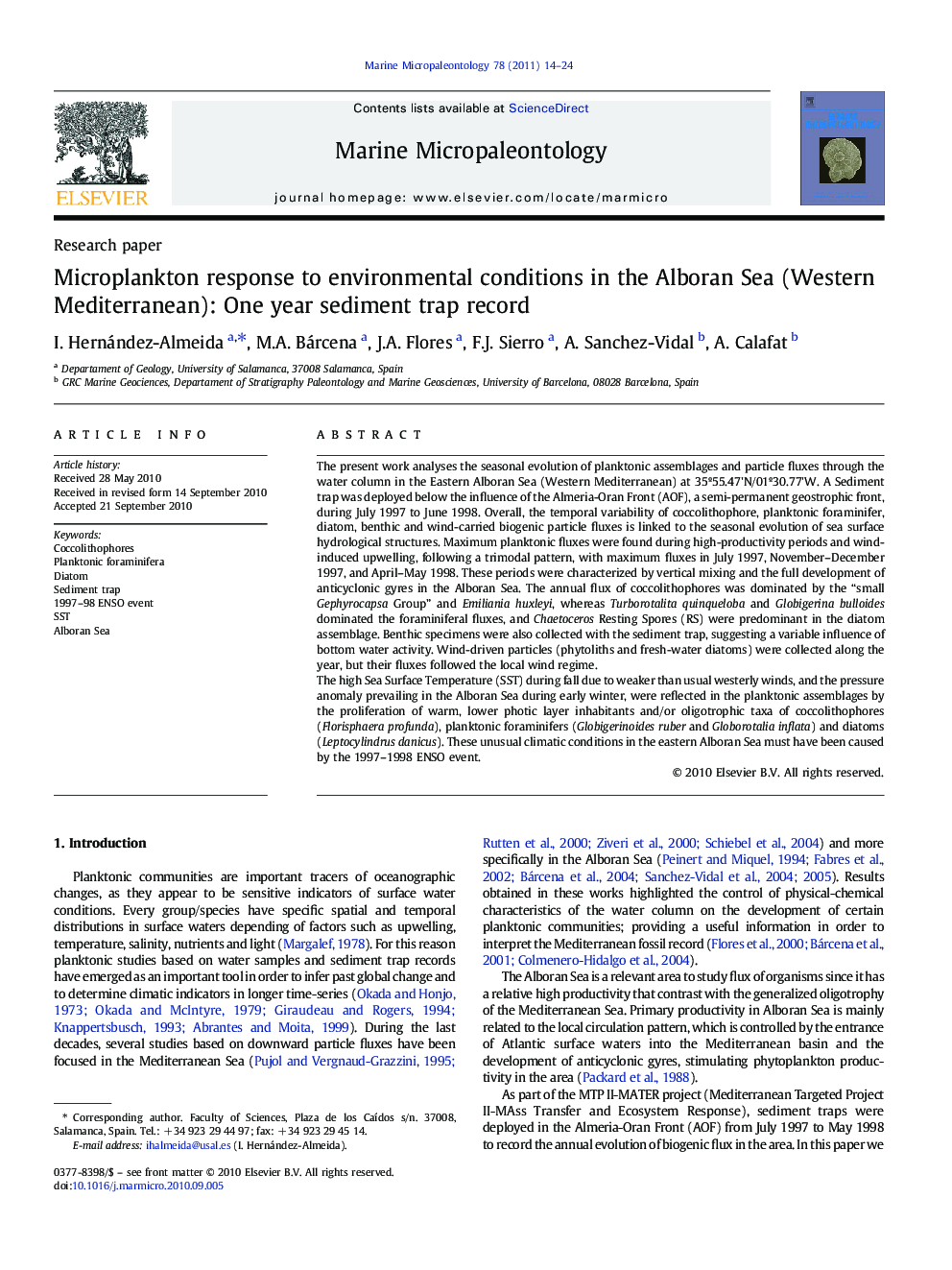| Article ID | Journal | Published Year | Pages | File Type |
|---|---|---|---|---|
| 4749104 | Marine Micropaleontology | 2011 | 11 Pages |
The present work analyses the seasonal evolution of planktonic assemblages and particle fluxes through the water column in the Eastern Alboran Sea (Western Mediterranean) at 35º55.47'N/01º30.77'W. A Sediment trap was deployed below the influence of the Almeria-Oran Front (AOF), a semi-permanent geostrophic front, during July 1997 to June 1998. Overall, the temporal variability of coccolithophore, planktonic foraminifer, diatom, benthic and wind-carried biogenic particle fluxes is linked to the seasonal evolution of sea surface hydrological structures. Maximum planktonic fluxes were found during high-productivity periods and wind-induced upwelling, following a trimodal pattern, with maximum fluxes in July 1997, November–December 1997, and April–May 1998. These periods were characterized by vertical mixing and the full development of anticyclonic gyres in the Alboran Sea. The annual flux of coccolithophores was dominated by the “small Gephyrocapsa Group” and Emiliania huxleyi, whereas Turborotalita quinqueloba and Globigerina bulloides dominated the foraminiferal fluxes, and Chaetoceros Resting Spores (RS) were predominant in the diatom assemblage. Benthic specimens were also collected with the sediment trap, suggesting a variable influence of bottom water activity. Wind-driven particles (phytoliths and fresh-water diatoms) were collected along the year, but their fluxes followed the local wind regime.The high Sea Surface Temperature (SST) during fall due to weaker than usual westerly winds, and the pressure anomaly prevailing in the Alboran Sea during early winter, were reflected in the planktonic assemblages by the proliferation of warm, lower photic layer inhabitants and/or oligotrophic taxa of coccolithophores (Florisphaera profunda), planktonic foraminifers (Globigerinoides ruber and Globorotalia inflata) and diatoms (Leptocylindrus danicus). These unusual climatic conditions in the eastern Alboran Sea must have been caused by the 1997–1998 ENSO event.
